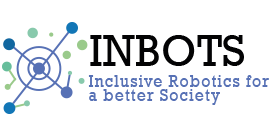In the context of INBOTS Working group on market analyses & support to SMEs Jaime Duarte, CEO and co-founder of MyoDwiss, a company that emerged from the academia and which is seeking to meet the market needs.

Who you are? Please describe briefly yourself.
My name is Jaime Duarte. I am the CEO and one of the co-founders of MyoSwiss. I am a mechanical engineer. I’m graduated in Florida in the United States and I did my master’s in mechanical engineering at the University of California in Irvine. Since my graduate program, I’ve been working in the field of rehabilitative robotics; so looking to use robots to understand how humans and animals move with the ultimate goal to be able to use this knowledge to help in the rehabilitation process of people with movement problems or to develop technology that assist people to have some kind of movement problems.
Which was your role in the company at the beginning and what is your role now?
The company was founded in the middle of 2017 and it was originally founded by me and by Kai Schimdt. He had started a project as part of his PhD work in the sensory motor systems lab at the ETH Zurich in 2015 and towards the end of the year I joined the lab. The following year we started talking also to investors both towards the commercialization of the technologies and creating a company that could take the technology from the lab into the market. My role now continues to be the CEO of the company. So, me and Kai continue to lead the company. In these years, the company itself has grown in terms of employees and in terms of our applications but is still Kai and me who lead the company at the executive and management level.
What was your vision of your company at the beginning and how this vision changed during the years?
So we started with the vision of bringing technology that could be used by people in their daily lives. Technology like wearable robots that people can wear in daily life and can help people with mobility impairments to be more independent and to be engaged in daily life. And I would say it hasn’t changed too much. We’re still moving towards this goal.
So, the idea on what we are currently working is the development of our technology. I think it has been faster than we expected in some areas and slower in some other areas, but we are quite happy with the developments that we’ve made in the company to bring the technology from the lab into the market.
Would you define three milestones in the growing of the company?
So, the very first milestone was the negotiation with the technology transfer office of ETH Zurich of the agreement about the licensing of the technology developed within the lab. The second milestone was the creation and the growing of the company. In particular, in terms of growth of the company, I think what we’ve seen is initially a more technology-oriented growth to create a team of people for the technical development of the company. And the following milestone, I would say is now more towards the business development. Indeed, now the focus is to bring in the company people with more expertise on the business development side in order to create a team that will actually go out and sell our technology, i.e. a sales team.
Which kind of barriers did you find? Please define the most critical ones.
I would say at the beginning we thought that one of the big barriers was moving out from research and technical oriented mentalities. Indeed, both of us (i.e. me and Kai) we had been working in academic environments where the focus was mainly on the research side but, when you create a company, the goals changed quite a bit. Now the goal is to make technology that is not only interesting but also (i) commercially viable and (ii) accessible to the people that need it and that can become part of the market for those who need it. In conclusion, I think one of the big challenges is adapting the mentality of going as engineers as researchers more into business minded people.
What was/is the role of the academia in the creation and growing of the company?
I would say it was mostly on the creation side and on the early development of the technologies. Indeed, the role of academia is quite important there: projects that are may be riskier and that are at the forefront of technology. That kind of projects normally tend to happen in academia.
Then there is a very important aspect of the business development where is how do you make that technology now available to the mass market: there, academia is maybe not as important and then it’s more developing this business side of the company.
Which is the most critical element for the growing of a company in our sector?
So I think the most critical is bringing on the market new technology that hasn’t existed before. And getting the general population to understand what the technology is doing and how it’s designed to help them and to get people aware about these new approaches to the mobility.
Which is the biggest opportunity for a company in our sector?
For us, the biggest opportunity is the market need that has not been met by the appropriate technology. So, we target the population that has some mobility impairments but still have some movement abilities like elderly or people that are still moving but with injuries. And if you look at the market today, there isn’t much available for this group of patients: a lot of them end up being on wheelchairs or they end up using walkers or rollators, instead of using their bodies in a more natural way.
